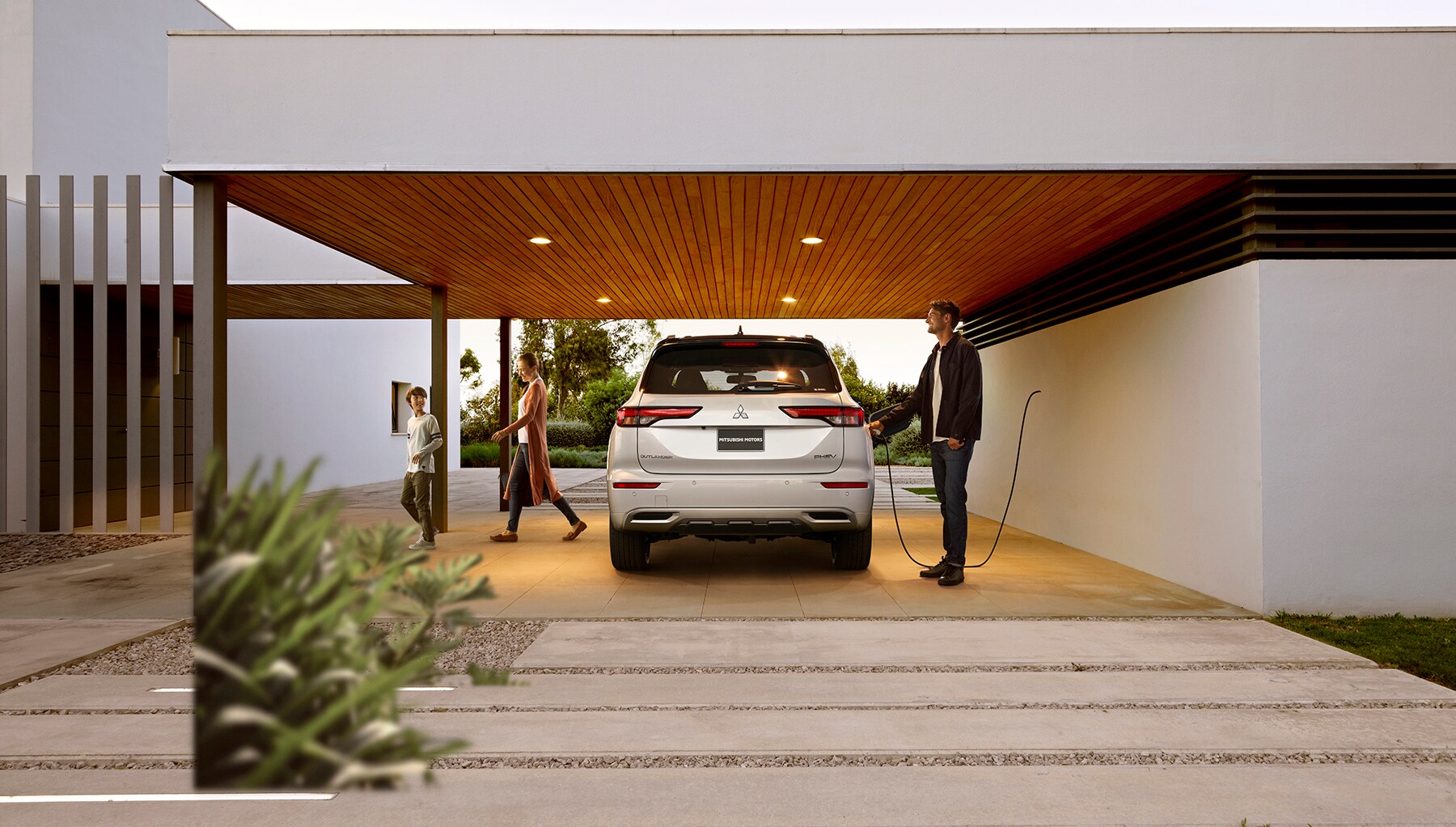Outlander PHEV Charging Tips

The 2023 Mitsubishi Outlander PHEV uses a gas powered engine and twin electric motors to give you the best of both energy worlds...and up to 420 miles of total range. The electric motors of the PHEV are dynamically supported by the gas engine, extending your drive range, and taking you the extra mile. The 2023 Outlander Plug-in Hybrid's innovative hybrid powertrain is the result of more than six decades of cutting-edge research and technological development.
PLUG-IN HYBRID ELECTRIC VEHICLES (PHEVS)
Unlike an all-electric vehicle, PHEVs have a smaller battery pack that delivers electric-only propulsion. The battery in your car is charged much like the battery in your phone; you need to plug it into an external power source when its state of charge becomes low. Once a PHEV's battery charge is depleted, the car switches to an internal combustion engine (ICE) powered by fuel.Contact
NORTHTOWNE MITSUBISHI
101 NORTH EAST VIVION ROAD
KANSAS CITY, MO 64118-4506
- Sales: 816-459-2750
- Service: (816) 459-2771
- Parts: (816) 459-2783
TYPES OF CHARGING LEVELS FOR EVs
Generally, when charging any kind of electric vehicle, the higher the voltage is, the faster the charge will be. The following levels of charging are generally available, but always check your car's Owner's Manual for charging options that are specific to your car.LEVEL 1 (120 V)

For PHEVs, which generally have an electric range of about 15 - 60+ miles, that means your car could regain all your car's full electric capability overnight with Level 1 charging. With their larger batteries, BEVs usually take much longer to fully charge on a Level 1 charger-they typically take 40+ hours if you're going from no charge to full charge. That said, an overnight Level 1 charge could be enough to top you off if your work commute or daily driving routine is around 40 miles or less, as the rate of charging would allow you to get that range each night.
LEVEL 2 (208 - 240 V)
You can significantly reduce the necessary charge time for BEVs and PHEVs if you can use an EV charger wired into the 208-240V range-known as Level 2 charging. The 208V charger is more likely to be seen in commercial applications, while 240V chargers are used for both commercial and home use. At home, 240V outlets are typically reserved for your laundry room, as most washers and dryers require 240V. But you can have a Level 2 charging system installed in your garage if it doesn't already have one.If it isn't practical to wire your home for Level 2 charging, Level 2 charging is widely available in many areas, both at public charging stations and at an increasing number of workplaces. For PHEV drivers, that means you could easily charge your car's battery at a public station over your lunch break.
LEVEL 3: DC FAST CHARGING (400 - 1000 V)
Also known as "Level 3," DC fast charging utilizes 400-1000V of power. It is only available at a limited number of public charging stations and provides roughly 10-20 miles of electric range per 3 minutes. With the faster charging that DC fast charging affords, a BEV owner could fully recharge their EV over a relaxed lunch or while shopping at a nearby shopping center. Not all BEVs and PHEVs are compatible with DC fast charging. Please see your car dealer or Owner's Manual for more information.HOW TO SET UP ELECTRIC CHARGING IN YOUR HOME

If your home doesn't come pre-wired for Level 2 charging and you wish to have the faster charging capabilities, you will need to have an electrician set up a 240V outlet or install a Level 2 home charger (sold separately from most vehicles).
The electrician will need to survey whether your home has enough amperage to supply the 240V outlet with enough amps to charge your EV. If rewiring your home is necessary, the electrician can also provide you with information on what permits and inspections may be required.
CHARGING AN ELECTRIC CAR AT A CHARGING STATION
There are multiple apps available that can help you find the nearest public charging station. We recommend the ChargePoint mobile app, which shows a nationwide network of stations. BEV and PHEV owners will quickly discover that some charging stations are busier than others. Over time, you'll become more familiar with which stations in your area are more convenient and reliably accessible.One of the biggest differences between filling up with gas and charging at a station is how you pay. Payment methods and requirements can vary from station to station and network to network. Some of the most common options include:
• Contactless payment: The simplest method, contactless payment includes tap-to-pay options with just your credit card or your compatible smartphone digital wallet.
• Creating an account: Some stations require that you create an account with their network before charging, typically through an app. Once in the app, you are likely to have more options: pay a monthly fee but pay less per kWh or pay-as-you-go but at higher rates. Regardless, once you've created an account, most charging networks will keep your credit card information on file to facilitate fast and easy payment during your next transaction.
• RFID cards and fobs: While you can typically "unlock" a charging station by signing in with an app, some networks will send you RFID (radio-frequency identification) cards or fobs that you can use for faster transactions in the future.
USING THE CHARGING STATION
Once you've got your payment set up, the charging process is straightforward.1. Connect the charging cable to your car's charging port. Note that connectors can differ, so make sure you know your vehicle's capabilities and requirements provided by your Owner's Manual.
2. Use the keycard, fob, or smartphone app provided to authenticate your payment. Once the charger recognizes you, it will begin charging. Your car's charging status is often indicated by LED lights on the charger and car. While the vehicle charges, you can monitor the process on the dashboard, charging station, or app.
3. Let the vehicle charge. Depending on how fast charging is, you may wish to walk away and take a break while the charging station tops up your EV.
To end the charging session, you may need to swipe your card or fob on the station or stop it through the charging station's app. Not every station is the same in how the information is displayed, but you will know how much your vehicle was charged and how much it cost. When you're ready to go, unplug the cable and return it to wherever it is stored within your vehicle.
Repeating these steps will soon enough feel familiar, and with more uses at various charging locations, charging your electric car will soon be as easy and reflexive as pumping gas.
How Can We Help?
* Indicates a required field
 AdChoices
AdChoices